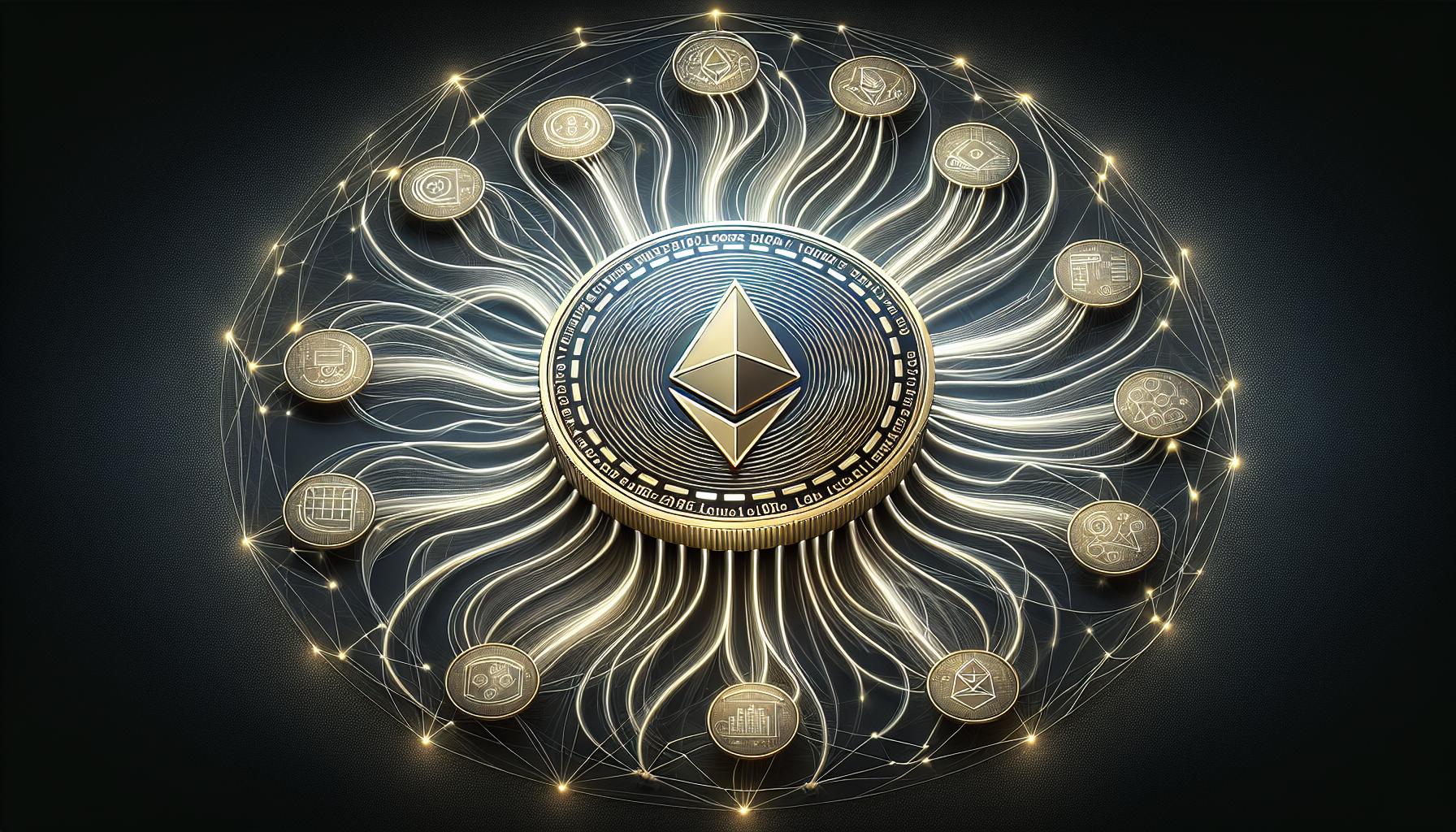Mastering Ethereum Gas Fees: Strategies for Optimal Transactions
If you’ve ever delved into the world of Ethereum transactions, you’ve likely encountered the concept of gas fees. Understanding Ethereum gas fees is crucial for navigating the realm of decentralized finance and smart contracts on the Ethereum blockchain. These fees represent the cost of performing transactions or executing smart contracts on the network. The dynamic nature of gas fees can impact the speed and cost-effectiveness of your transactions, influencing your overall experience with Ethereum. In this article, we’ll explore what Ethereum gas fees are, how they work, and why they matter in the ever-evolving landscape of blockchain technology.
Understanding Ethereum Gas Fees
To navigate the realm of Ethereum transactions effectively, you need to grasp the concept of Ethereum gas fees. These fees are the costs associated with interacting with the Ethereum blockchain, whether you’re sending ETH, interacting with a smart contract, or engaging in decentralized finance (DeFi) activities.
Transaction Execution:
When you send an Ethereum transaction, miners on the network need to validate and execute your transaction. Gas fees are what you pay to instruct these miners to carry out the operation. The fees are typically denoted in gwei, which is a smaller denomination of Ether.
Dynamic Nature:
Ethereum gas fees are not fixed but rather fluctuate based on network congestion. During times of high activity, such as when many users are sending transactions or interacting with DeFi protocols, gas fees can increase significantly. This dynamic nature can impact the cost and speed of your transactions.
Transaction Prioritization:
Miners prioritize transactions with higher gas fees to maximize their earnings. If you set a low gas fee, your transaction may take longer to be included in a block, especially during peak usage times. To ensure timely processing, you may need to adjust your gas fee based on network conditions.
Optimizing Gas Fees:
To manage Ethereum gas fees effectively, you can utilize tools that provide real-time data on gas prices and network congestion. By monitoring these metrics, you can choose the optimal gas fee for your transactions. Additionally, platforms offering gas fee predictions can help you anticipate costs and adjust your fees accordingly.
Significance in Blockchain Operations:
Understanding Ethereum gas fees is crucial for anyone involved in Ethereum transactions, DeFi protocols, or smart contract interactions. By staying informed about gas fees and network conditions, you can enhance the cost-efficiency and speed of your Ethereum interactions.
By having a clear understanding of Ethereum gas fees and their impact on transactions, you can navigate the Ethereum network more effectively and make informed decisions when engaging in blockchain operations.
Factors Influencing Ethereum Gas Fees

When engaging in Ethereum transactions, it’s essential to understand the factors that influence Ethereum gas fees. These fees are crucial for executing transactions on the Ethereum network and can vary based on several key elements, affecting the speed and cost-effectiveness of your transactions. Here are the factors that play a significant role in determining Ethereum gas fees:
Network Congestion
When the Ethereum network experiences high traffic, known as network congestion, the demand for transaction processing increases. During periods of congestion, users often compete by offering higher gas fees to have their transactions processed quicker. As a result, gas fees tend to rise during these busy periods.
Gas Price Volatility
The price of gas required to execute transactions on the Ethereum network is not fixed and can fluctuate based on market demand. Gas prices are denoted in Gwei, a fraction of Ether, and can change rapidly, impacting the cost of interacting with smart contracts or sending Ether.
Gas Limit
The gas limit refers to the maximum amount of gas you’re willing to spend on a transaction. Setting a higher gas limit allows more complex transactions or interactions with smart contracts but also increases the potential cost of the transaction. It’s crucial to set an appropriate gas limit to avoid unnecessarily high fees.
Type of Transaction
Different types of transactions on the Ethereum network consume varying amounts of gas. Simple transactions, like sending Ether from one wallet to another, typically require less gas compared to complex interactions with smart contracts or decentralized applications (DApps). The complexity of your transaction directly influences the gas fees you’ll need to pay.
Miner Priority
Miners on the Ethereum network prioritize transactions based on the gas fees attached to them. Transactions offering higher gas fees are more likely to be included in the next block, ensuring faster processing. By adjusting your gas fees according to network conditions, you can potentially expedite the confirmation of your transactions.
Understanding these factors affecting Ethereum gas fees is essential for optimizing your interactions on the Ethereum network. By staying informed about network conditions, adjusting gas fees accordingly, and being mindful of transaction complexity, you can enhance the efficiency and cost-effectiveness of your Ethereum transactions.
Strategies to Manage Ethereum Gas Fees
When dealing with Ethereum transactions, it’s essential to employ strategies to manage gas fees effectively. Below are some practical approaches to optimize your Ethereum gas fee expenditure:
Stay Informed
Keep yourself updated on the current network conditions to make informed decisions about adjusting gas fees. Monitor gas price trends and network congestion levels to determine the most cost-effective times for conducting transactions.
Set Gas Price According to Network Activity
Adjust your gas price based on the present network activity. During periods of high demand, increasing the gas price ensures that miners prioritize your transaction, leading to faster confirmations. Conversely, in less congested times, you can lower the gas price to save on fees.
Use Gas Limit Wisely
Be mindful of setting an appropriate gas limit for your transactions. Setting a gas limit too low might result in failed transactions, while an excessively high gas limit can lead to unnecessary fees. Understanding the complexity of your transaction helps in determining the ideal gas limit.
Consider Transaction Type
Different transaction types incur varying gas costs. For example, simple transfers require less gas compared to interactions with smart contracts. Tailor your approach by selecting the most suitable transaction type to minimize gas fees.
Optimize Transaction Complexity
Simplify transaction steps whenever possible. Complex interactions with smart contracts, token swaps, or DeFi protocols can escalate gas costs. Streamlining your transactions can significantly reduce gas fees.
Stay Mindful of Miner Priority
Miners prioritize transactions with higher gas fees attached to them. By adjusting your gas price, you can influence the priority of your transaction in the queue and potentially expedite its processing.
Test Transactions with Small Amounts
Before executing large-value transactions, consider testing the waters with smaller amounts. This allows you to gauge the appropriate gas fee levels without incurring significant costs.
Employing these strategies empowers you to navigate the Ethereum network efficiently, optimizing gas fee management and enhancing the cost-effectiveness of your transactions.
Impact of Ethereum Gas Fees on Transactions
Understanding Ethereum gas fees is crucial when engaging in transactions on the Ethereum network. Gas fees play a significant role in determining the cost and speed of transactions. Several factors influence gas fees, such as network congestion, gas price volatility, gas limit, transaction type, and miner priority. These elements collectively affect the overall efficiency and cost-effectiveness of your transactions.
To optimize your experience and minimize costs, it’s essential to consider the impact of Ethereum gas fees on your transactions. Here’s how gas fees can influence your interactions on the Ethereum network:
- Transaction Cost: Gas fees directly impact the total cost of your transactions. Higher gas fees are often associated with faster transaction processing, while lower fees may result in slower confirmation times. Being aware of current gas prices and network conditions can help you determine the optimal fee to pay for your transactions.
- Transaction Speed: Paying higher gas fees can prioritize your transaction in the queue, leading to quicker processing times. Conversely, lower fees may result in longer confirmation times, especially during periods of high network congestion. Understanding the relationship between gas fees and transaction speed can help you make informed decisions when sending Ethereum transactions.
- Transaction Priority: Miners prioritize transactions with higher gas fees since it incentivizes them to include those transactions in the next block. By setting appropriate gas fees based on network activity and transaction urgency, you can increase the chances of your transactions being processed promptly.
- Cost-Efficiency: Optimizing gas fees involves finding the right balance between transaction speed and cost. By staying informed about gas price trends, adjusting fees according to network conditions, and considering transaction complexity, you can enhance the cost-efficiency of your Ethereum transactions.
By recognizing the impact of Ethereum gas fees on transactions and implementing strategies to mitigate costs and improve transaction speed, you can navigate the Ethereum network more effectively and enhance your overall transaction experience.
Future Trends in Ethereum Gas Fee Management
To stay ahead in the evolving landscape of Ethereum gas fee management, several trends are shaping the future of transaction optimization. Understanding these trends can help you navigate the Ethereum network more efficiently:
- Optimizing Gas Fees Through Automation: Automated tools and smart contracts are increasingly being used to optimize gas fees by adjusting transaction parameters dynamically based on network conditions. By leveraging such automation, you can enhance the cost-effectiveness of your transactions on the Ethereum network.
- Integration of Layer 2 Solutions: With the rise of Layer 2 solutions like Optimistic Rollups and zk-Rollups, Ethereum is moving towards scalability and reduced gas fees for transactions. Integrating these solutions can significantly lower your transaction costs and improve overall network efficiency.
- Gas Fee Predictors and Analytics: The development of gas fee prediction models and analytics tools is enabling users to anticipate optimal gas prices for their transactions. By utilizing these tools, you can make informed decisions on gas fees, ensuring cost-efficient transactions on the Ethereum network.
- Dynamic Fee Structures: Dynamic fee structures based on real-time network congestion and gas price fluctuations are gaining popularity. These structures adjust transaction fees dynamically, allowing you to adapt to changing network conditions and optimize the cost-effectiveness of your transactions.
- Gas Fee Tokenization: Some platforms are exploring the tokenization of gas fees to offer more flexibility and efficiency in fee payments. By utilizing gas fee tokens, you can potentially streamline the fee payment process and optimize transaction costs on the Ethereum network.
As Ethereum gas fee management continues to evolve, staying informed about these trends and adopting relevant strategies can help you optimize transaction costs, improve efficiency, and enhance your overall experience on the Ethereum network. Embracing these future trends will empower you to navigate the complexities of gas fees effectively and maximize the benefits of transactions on the Ethereum blockchain.
Conclusion
Understanding Ethereum gas fees is crucial for optimizing your transactions on the network. By implementing strategies like adjusting fees based on network conditions and finding the right balance between speed and cost, you can enhance your transaction efficiency. Looking ahead, emerging trends such as automation tools, Layer 2 solutions, gas fee predictors, dynamic fee structures, and gas fee tokenization are set to revolutionize gas fee management. These advancements aim to make transactions more cost-effective, scalable, and efficient. Stay informed, adapt to new tools, and leverage evolving technologies to navigate Ethereum gas fees effectively and maximize the benefits of your transactions.
Frequently Asked Questions
What are Ethereum gas fees?
Gas fees on Ethereum represent the cost of computational resources required to perform transactions or smart contract operations on the network.
Why do gas fees fluctuate?
Gas fees change based on network congestion levels. High demand for transactions increases fees, while low demand decreases them.
How can I optimize Ethereum gas fees?
You can optimize gas fees by adjusting gas price according to network conditions, choosing between speed and cost, and using automation tools for fee optimization.
What are some future trends in Ethereum gas fee management?
Future trends in gas fee management include automation tools, Layer 2 solutions, gas fee predictors, dynamic fee structures, and gas fee tokenization for enhanced efficiency and scalability.
Why is it important to manage Ethereum gas fees effectively?
Managing gas fees effectively ensures cost-effectiveness, scalability, and efficiency in transactions on the Ethereum network, maximizing benefits for users.







 Bitcoin
Bitcoin  Ethereum
Ethereum  Tether
Tether  XRP
XRP  USDC
USDC  TRON
TRON  Lido Staked Ether
Lido Staked Ether  Dogecoin
Dogecoin  Figure Heloc
Figure Heloc  Cardano
Cardano  WhiteBIT Coin
WhiteBIT Coin  Bitcoin Cash
Bitcoin Cash  Wrapped stETH
Wrapped stETH  Wrapped Bitcoin
Wrapped Bitcoin  USDS
USDS  Wrapped eETH
Wrapped eETH  Binance Bridged USDT (BNB Smart Chain)
Binance Bridged USDT (BNB Smart Chain)  Chainlink
Chainlink  LEO Token
LEO Token  Zcash
Zcash  Monero
Monero  WETH
WETH  Stellar
Stellar  Coinbase Wrapped BTC
Coinbase Wrapped BTC  Ethena USDe
Ethena USDe  Hyperliquid
Hyperliquid  Litecoin
Litecoin  Canton
Canton  Avalanche
Avalanche  Sui
Sui  Hedera
Hedera  USDT0
USDT0  Dai
Dai  sUSDS
sUSDS  Shiba Inu
Shiba Inu  Toncoin
Toncoin  World Liberty Financial
World Liberty Financial  Uniswap
Uniswap  PayPal USD
PayPal USD  Cronos
Cronos  Ethena Staked USDe
Ethena Staked USDe  USD1
USD1  Mantle
Mantle  Polkadot
Polkadot  Rain
Rain  MemeCore
MemeCore  Bitget Token
Bitget Token  OKB
OKB